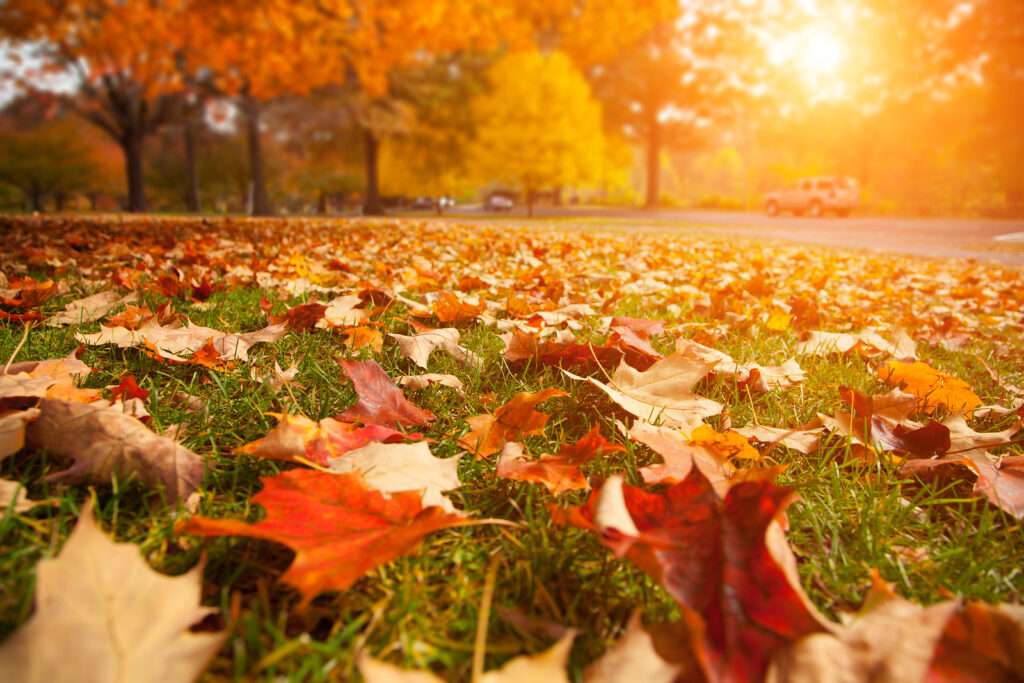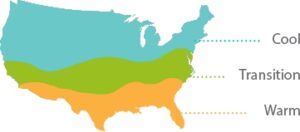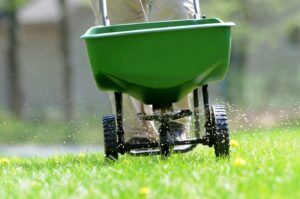Selling a Fall Lawn Maintenance Package

By Bryan Ostlund
Whether it’s outdoor entertaining or children and dogs playing on the grass, lawns get a lot of use in the summer. As a result, lawn care tends to have a summer focus. Once the evenings cool off and the kids head back to school, many homeowners are ready to dial back on the maintenance. As a lawn care professional, this can be challenging for business, and has the potential to create lawn care problems come spring.
Lawn growth will often slow in the fall; however, the grass begins taking in moisture and nutrients in preparation for the dormant winter months ahead. This creates the perfect opportunity to aerate, reseed and fertilize. Because busy homeowners may not have the time, expertise or equipment needed to perform these tasks, the expert services of a professional are often required. Given many homeowners’ limited understanding of their lawn’s growth cycles, consumer education is critical when working to introduce a fall maintenance package to a new customer or move an established client beyond basic, summer-centric lawn care.
A key selling point to offer is that fall maintenance can have a major impact, in terms of both aesthetics and turf health, on how the lawn reemerges in the spring.
The following are some important benefits to communicate about each of the three main components of a fall maintenance program:
Overseeding in southern regions
While golf courses and sports stadiums in the southern, warm-season, regions of the U.S. regularly overseed their turf to maintain a lush green lawn year-round, homeowners can also benefit from both the aesthetic benefits and increased traffic tolerance an overseeded lawn can provide. However, in order to successfully overseed a warm-season lawn without damaging the existing turf, it’s important for consumers to consult a turf professional to help overseed in the fall and then develop and execute a spring transition plan when temperatures rise. In addition to even application, it’s important to select the correct type of seed based not only on the general climatic conditions of the geographic area (such as typical temperature range and amount of precipitation), but also on more plot-specific conditions such as soil type, drainage and amount of shade, as well as lawn use patterns. Turfgrass breeders have developed a wide-range of grass varieties with different densities and textures, levels of tolerance to wear and resistance to drought and disease, for example, and consumers often lack the knowledge and experience to make a knowledgeable choice.

Reseeding in northern regions
In northern, cool-season, climates, where lawns will soon be impacted by winter weather, fall seeding or reseeding is a prime way to repair thin or bare patches in the lawn. By doing so, homeowners not only position their lawns for a healthier start come spring, but also help prevent erosion that can occur during fall rains. What’s more, seeding, or overseeding in the fall to enhance the overall health of your lawn, is the best defense against weeds year-round. Healthy turfgrass is an effective way to outcompete weeds, whereas lawns with poor density or bare areas, can quickly become infested.
Aerating
Many homeowners do not realize how beneficial regular aeration is for a lawn – or that fall is an excellent time to perform this task. You may need to explain how hollow-tine core cultivation combats soil compaction and thatch buildup and allows more water, oxygen and nutrients to reach the turf root system. Aeration followed by top dressing with soil, compost or even sand will help the plants’ roots grow more deeply and create a stronger, more vigorous lawn that will survive winter dormancy in a better state and thus bounce back more quickly come spring.
The hassle of having to rent an aerator (and actually doing the work, if the yard is large) can cause many homeowners to avoid this important task, so including this service in the fall maintenance package gives you the opportunity to significantly improve the health of the client’s lawn, providing a real long-term benefit.
Fertilizing
Most homeowners know they need to fertilize their lawns in the fall (which is when about 75 percent of the annual fertilization should be applied), but the execution is often haphazard. It’s easy to apply too much or too little, or at the wrong time in the plant life cycle, so clients appreciate being relieved of this concern.
Fertilization keeps the lawn greener longer and provides the nutrients the grass needs to develop deep roots now and store nutrients for the winter. Fertilizing in the early fall will promote the lawn’s recovery and growth. A second application in the late fall (November) can be added in the northern regions to further ensure healthy regrowth the following spring.
Some clients may be opposed to the use of conventional fertilizers, particularly if they have small children or pets at home, so make sure you have natural and organic options to offer as well.
The bottom line
A professional fall lawn maintenance package promotes good turf root development, enhances the plants’ storage of energy reserves, and helps the grass retain color longer. It can also mean all the difference in the amount of repair and recovery the lawn needs in the spring.
As a turf professional, you are poised to provide the expertise and equipment required to successfully execute fall lawn maintenance tasks – including aerating, reseeding and fertilizing – within the ideal timeframe. Likewise, by educating homeowners about the benefits of year-round maintenance, relieving their stress of executing the maintenance, and enabling them to enjoy their lawn longer into the fall, you will foster long-term, trusted relationships and reap the business benefits associated with year-round services.
Bryan Ostlund is executive director of Grass Seed USA, a national coalition of grass seed farmers and academic turf specialists with a wealth of experience in studying, growing and harvesting grass and grass seed. The coalition seeks to inform and educate residential and commercial customers about the benefits of grass and best practices for responsibly growing and maintaining healthy turf. For more information, visit www.weseedamerica.com or follow @WeSeedAmerica [ital>on Facebook and Twitter.



